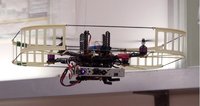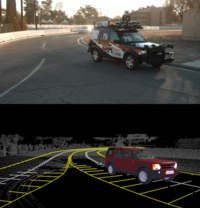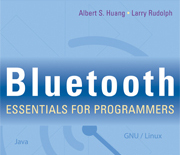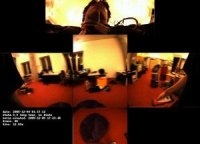
http://www.youtube.com/watch?v=aiNX-vpDhMo
http://www.youtube.com/watch?v=7nUq28utuGM
Micro-air vehicles can go places no other vehicle can go, especially in highly confined and cluttered environments. Manually piloting these vehicles is difficult and has a high cognitive load on the human operator. To alleviate this, we've done substantial research on improving the autonomous navigation capabilities of the vehicles themselves, from accepting complex natural language commands to building highly accurate 3D models of the local environment for safe and efficient motion planning.

Following our work in the DARPA Urban Challenge, our research group began working on mobile robots with more advanced autonomous capabiltiies. In addition to the robot safely navigating itself from one point to another, we also wanted it to do something useful along the way. The Agile Robotics autonomous forklift project focused on developing an autonomous forklift for operation in rough and unstructured environments, such as you might find in temporary supply facilities in disaster relief or forward deployment scenarios.

The lane estimation problem is as follows: Using onboard sensors such as video cameras, laser range scanners, etc., a vehicle must detect and estimate the geometry of nearby travel lanes. As the vehicle travels and makes new observations, it must maintain and update these estimates. These estimates can then be used in applications ranging from fully autonomous driving to human driver assistance and road surveying.
Much of my research as a PhD student revolved around developing lane estimation algorithms for autonomous vehicles in challenging conditions (see the Urban Challenge below).


While working on my Master's thesis, I had great difficulty finding introductory material on Bluetooth targeted at someone with a computer science background, and usually ended up reading through source code and specifications to find the information that I needed. Frustrated, I began assembling an online tutorial about Bluetooth, which served both as my own reference and as introductory material for others. After I finished my thesis, I expanded the tutorial into a book with the help of Larry Rudolph, and published it with Cambridge University Press.

